Abstract
1. The isolated, perfused rat heart accumulates dopamine by two distinct uptake mechanisms characterized by different kinetic constrants and different patterns of metabolite production (Uptake 1: Km 0·69 × 10-6M and Vmax (1·45 × 10-9 mol/g)/min; Uptake 2: Km 5·9 × 10-4M and Vmax (0·14 × 10-6 mol/g)/min).
2. The metabolic fate of dopamine taken up by the isolated, perfused rat heart depends on the concentration of dopamine in the perfusion medium. At a very low perfusion concentration (0·047 × 10-10 mol/ml) most of the radioactivity is stored as unchanged dopamine and the main metabolite is noradrenaline. With increasing perfusion concentrations deamination becomes the main metabolic pathway, deaminated metabolites accounting for more than 50% of the total radioactivity after perfusion with 2,614·4 × 10-10 mol/ml for 16 minutes. The O-methylated, and the O-methylated deaminated metabolites are of minor importance at all perfusion concentrations.
3. The resistance to wash out of the dopamine taken up by the isolated, perfused rat heart is dependent on the perfusion concentration used. At a concentration of 66·9 × 10-10 mol/ml, 50% of the total activity is washed out during an 8 min wash period. Within the same time interval there is no wash out when a perfusion concentration of 0·042 × 10-10 mol/ml is used.
4. It is concluded that the metabolic fate of dopamine taken up at various perfusion concentrations reflects the distribution of dopamine within intra- and extraneuronal compartments in the hearts.
Full text
PDF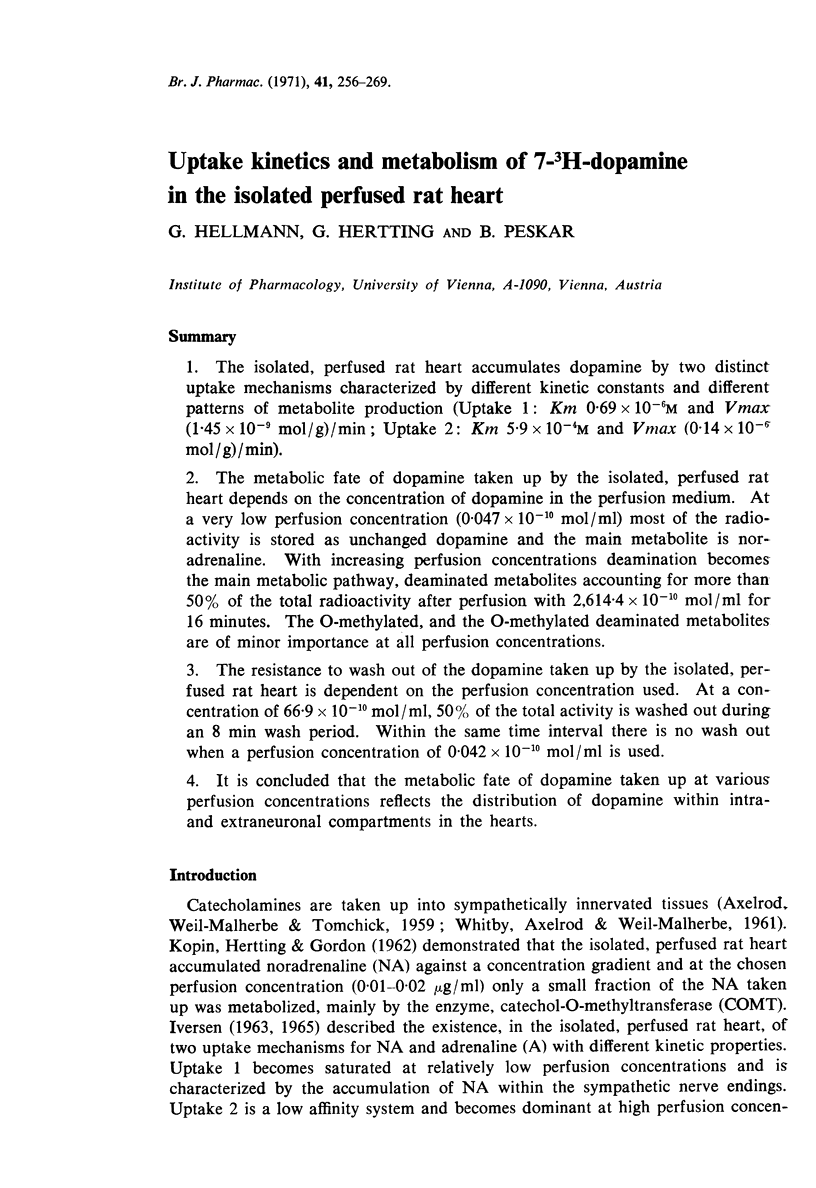
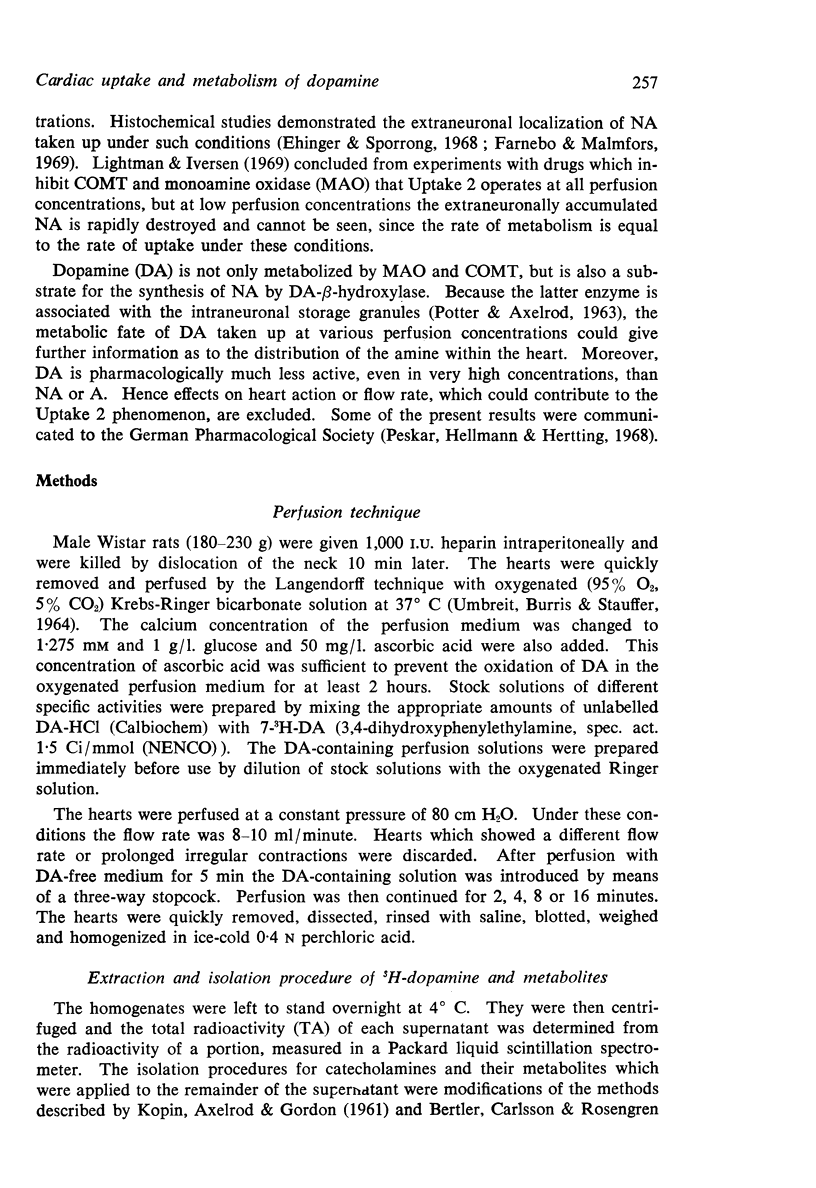
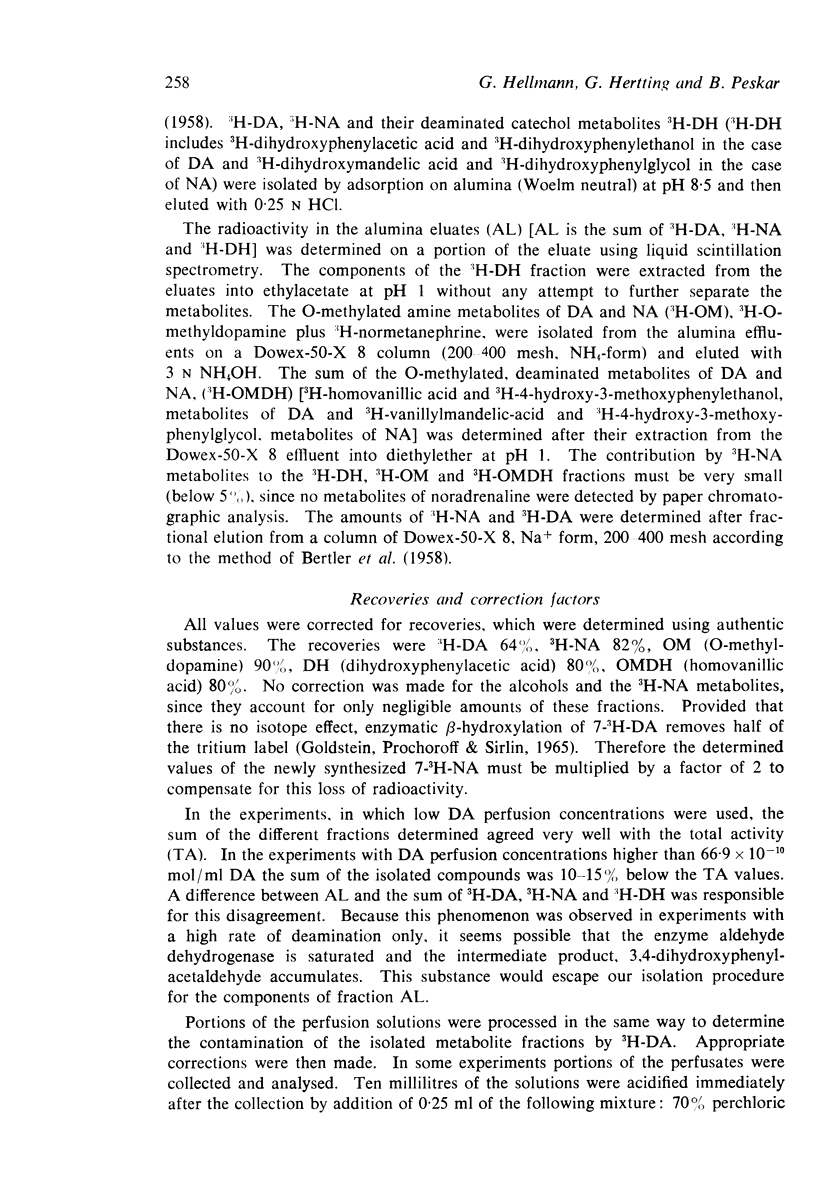

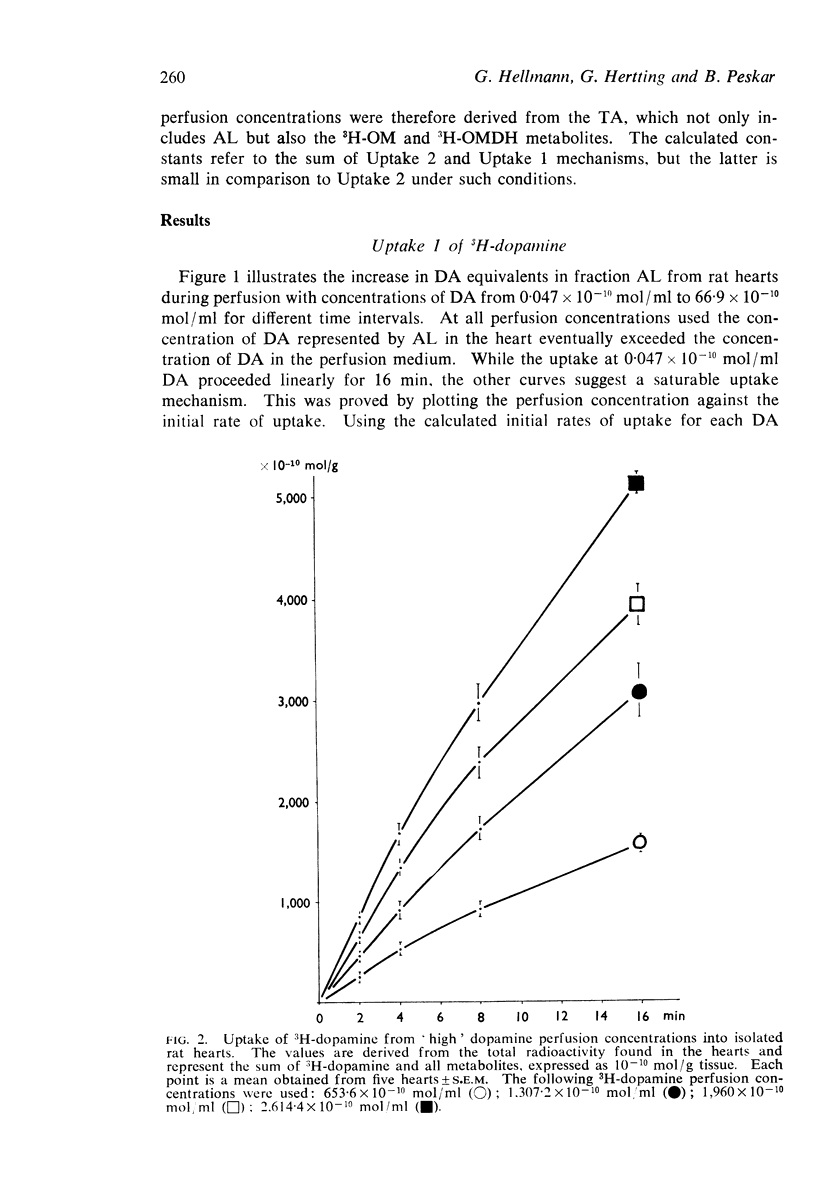
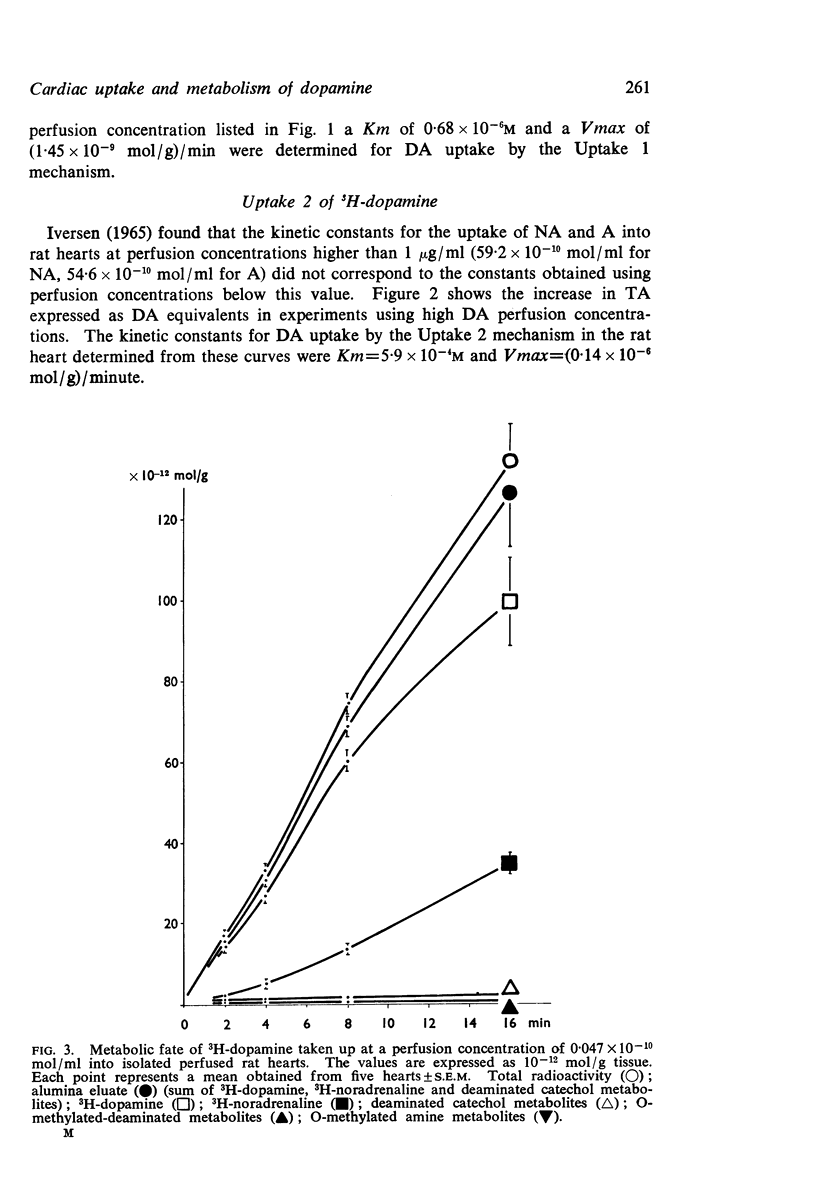
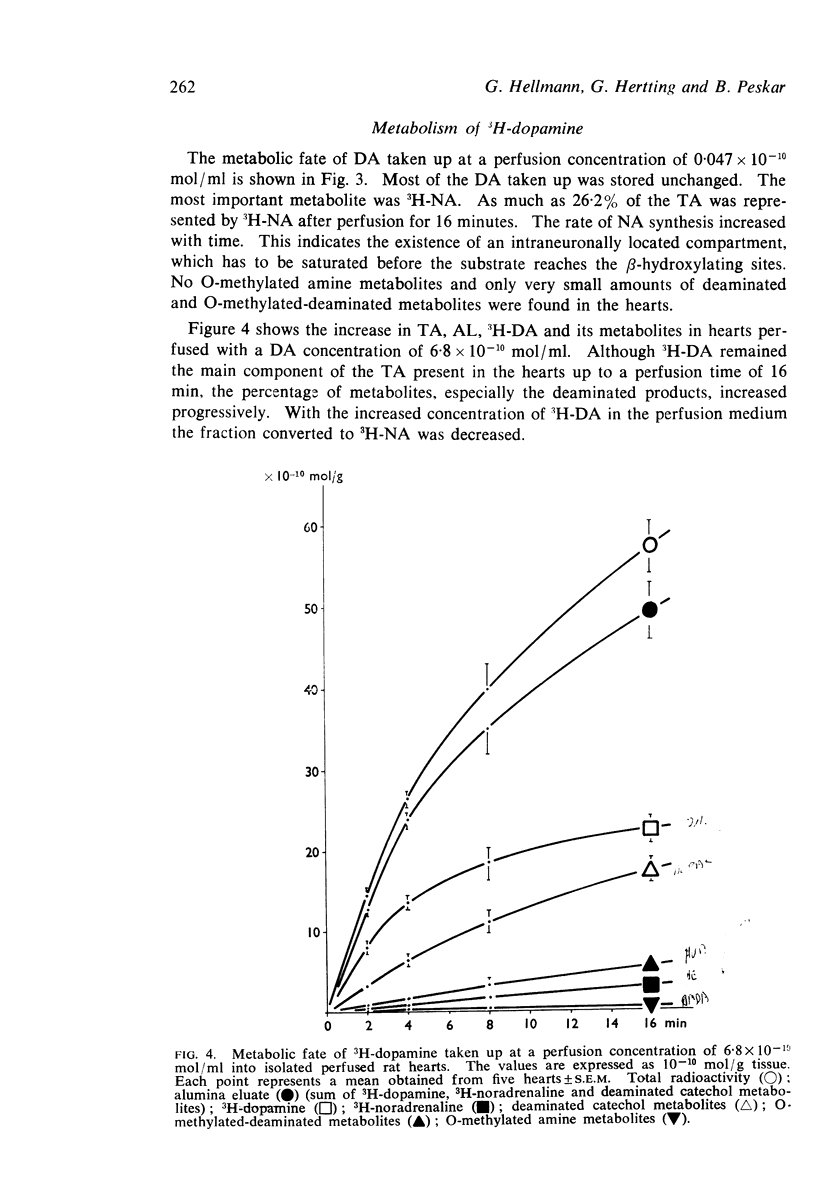



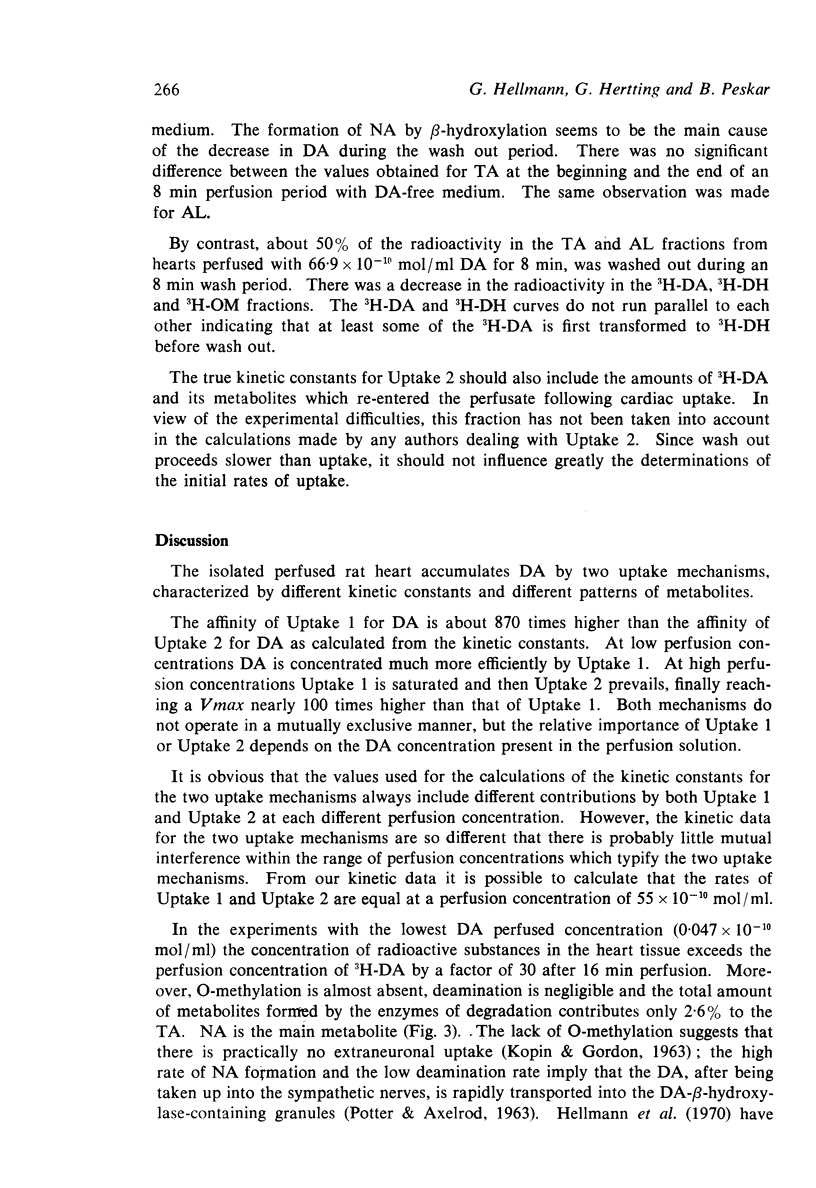

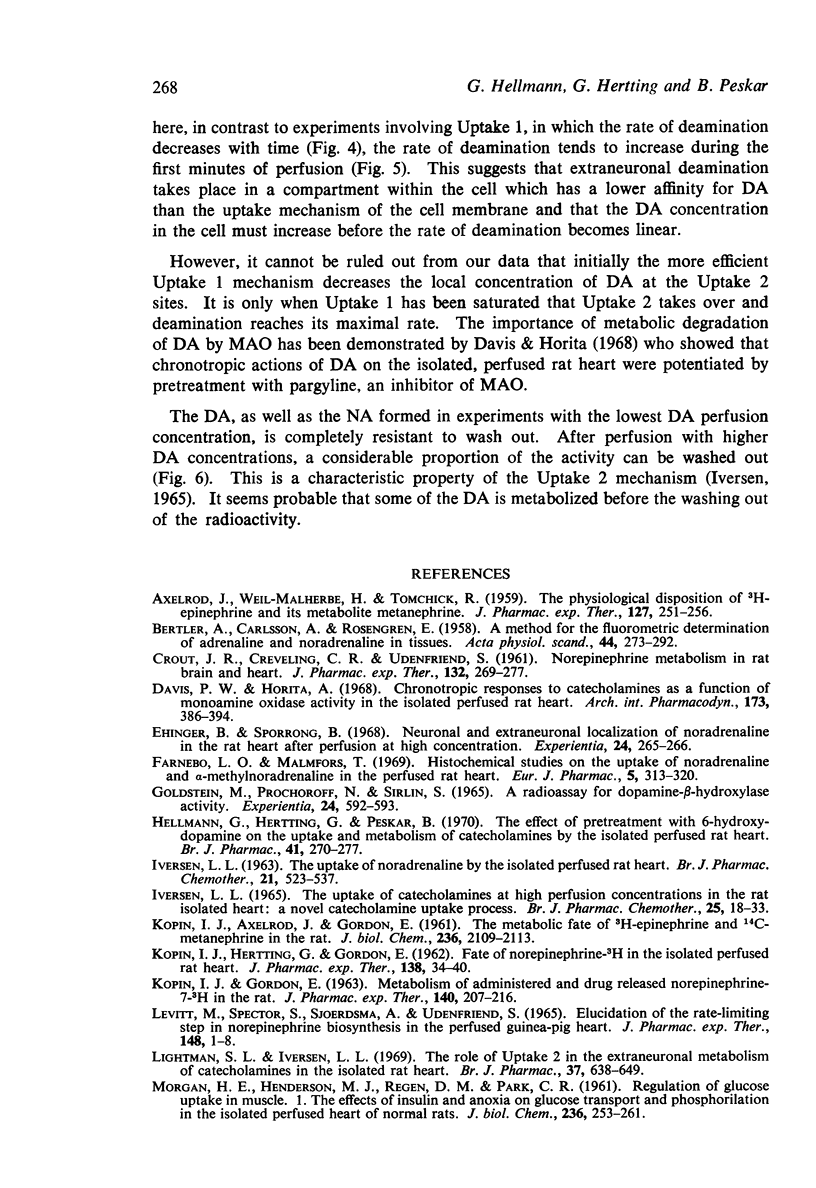
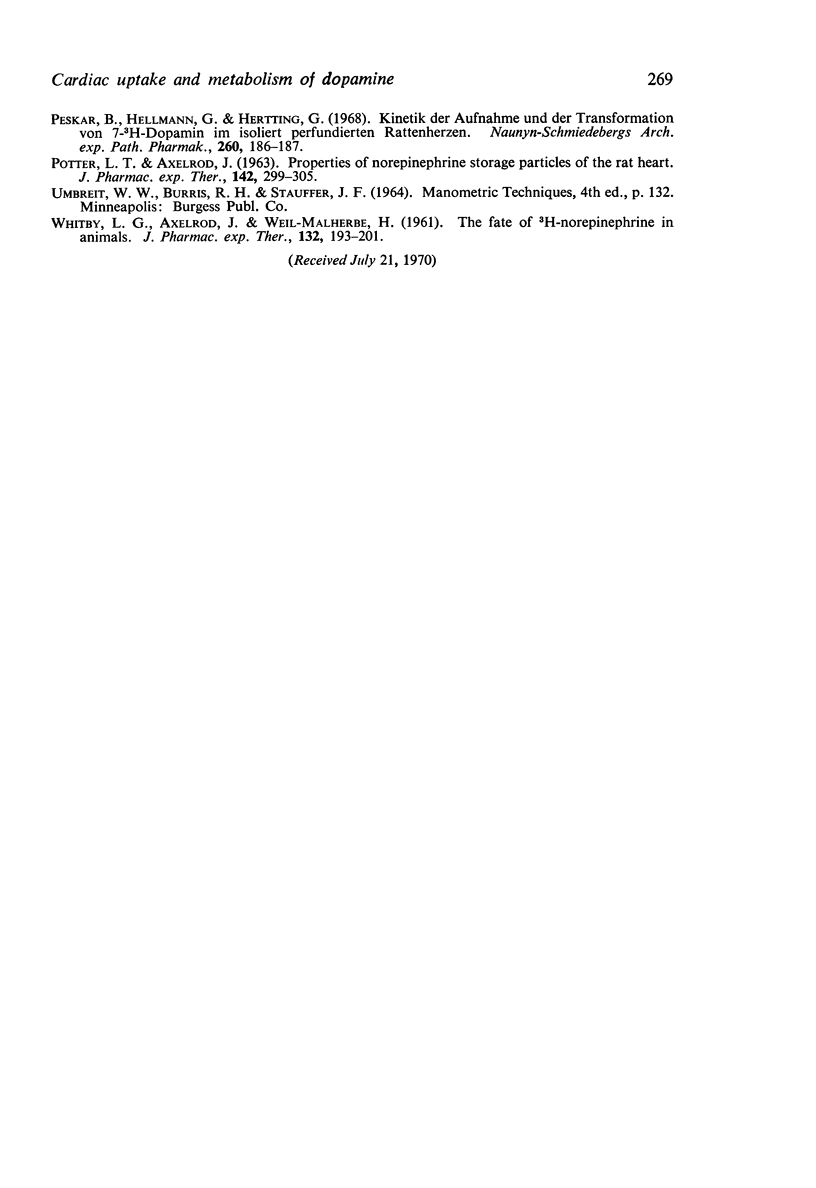
Selected References
These references are in PubMed. This may not be the complete list of references from this article.
- AXELROD J., WEIL-MALHERBE H., TOMCHICK R. The physiological disposition of H3-epinephrine and its metabolite metanephrine. J Pharmacol Exp Ther. 1959 Dec;127:251–256. [PubMed] [Google Scholar]
- BERTLER A., CARLSSON A., ROSENGREN E. A method for the fluorimetric determination of adrenaline and noradrenaline in tissues. Acta Physiol Scand. 1958 Dec 15;44(3-4):273–292. doi: 10.1111/j.1748-1716.1958.tb01627.x. [DOI] [PubMed] [Google Scholar]
- CROUT J. R., CREVELING C. R., UDENFRIEND S. Norepinephrine metabolism in rat brain and heart. J Pharmacol Exp Ther. 1961 Jun;132:269–277. [PubMed] [Google Scholar]
- Davis P. W., Horita A. Chronotropic responses to catecholamines as a function of monoamine oxidase activity in the isolated perfused rat heart. Arch Int Pharmacodyn Ther. 1968 Jun;173(2):386–394. [PubMed] [Google Scholar]
- Ehinger B., Sporrong B. Neuronal and extraneuronal localization of nonadrenaline in the rat heart after perfusion at high concentration. Experientia. 1968 Mar 15;24(3):265–266. doi: 10.1007/BF02152811. [DOI] [PubMed] [Google Scholar]
- Farnebo L. O., Malmfors T. Histochemical studies on the uptake of noradrenaline and alpha-methyl-noradrenaline in the perfused rat heart. Eur J Pharmacol. 1969 Mar;5(4):313–320. doi: 10.1016/0014-2999(69)90107-1. [DOI] [PubMed] [Google Scholar]
- Goldstein M., Prochoroff N., Sirlin S. A radioassay for dopamine-beta-hydroxylase activity. Experientia. 1965 Oct 15;21(10):592–593. doi: 10.1007/BF02151551. [DOI] [PubMed] [Google Scholar]
- Hellmann G., Hertting G., Peskar B. Effect of pretreatment with 6-hydroxydopamine on the uptake and metabolism of catecholamines by the isolated perfused rat heart. Br J Pharmacol. 1971 Feb;41(2):270–277. doi: 10.1111/j.1476-5381.1971.tb08027.x. [DOI] [PMC free article] [PubMed] [Google Scholar]
- IVERSEN L. L. THE UPTAKE OF NORADRENALINE BY THE ISOLATED PERFUSED RAT HEART. Br J Pharmacol Chemother. 1963 Dec;21:523–537. doi: 10.1111/j.1476-5381.1963.tb02020.x. [DOI] [PMC free article] [PubMed] [Google Scholar]
- KOPIN I. J., AXELROD J., GORDON E. The metabolic fate of H3-epinephrine and C14-metanephrine in the rat. J Biol Chem. 1961 Jul;236:2109–2113. [PubMed] [Google Scholar]
- KOPIN I. J., GORDON E. K. Metabolism of administered and drug-released norepinephrine-7-H3 in the rat. J Pharmacol Exp Ther. 1963 May;140:207–216. [PubMed] [Google Scholar]
- KOPIN I. J., HERTTING G., GORDON E. K. Fate of norepinephrine-H3 in the isolated perfused rat heart. J Pharmacol Exp Ther. 1962 Oct;138:34–40. [PubMed] [Google Scholar]
- LEVITT M., SPECTOR S., SJOERDSMA A., UDENFRIEND S. ELUCIDATION OF THE RATE-LIMITING STEP IN NOREPINEPHRINE BIOSYNTHESIS IN THE PERFUSED GUINEA-PIG HEART. J Pharmacol Exp Ther. 1965 Apr;148:1–8. [PubMed] [Google Scholar]
- Lightman S. L., Iversen L. L. The role of uptake2 in the extraneuronal metabolism of catecholamines in the isolated rat heart. Br J Pharmacol. 1969 Nov;37(3):638–649. doi: 10.1111/j.1476-5381.1969.tb08502.x. [DOI] [PMC free article] [PubMed] [Google Scholar]
- MORGAN H. E., HENDERSON M. J., REGEN D. M., PARK C. R. Regulation of glucose uptake in muscle. I. The effects of insulin and anoxia on glucose transport and phosphorylation in the isolated, perfused heart of normal rats. J Biol Chem. 1961 Feb;236:253–261. [PubMed] [Google Scholar]
- POTTER L. T., AXELROD J. PROPERTIES OF NOREPINEPHRINE STORAGE PARTICLES OF THE RAT HEART. J Pharmacol Exp Ther. 1963 Dec;142:299–305. [PubMed] [Google Scholar]
- Peskar B., Hellmann G., Hertting G. Kinetik der Aufnahme und der Transformation von 7-3H-Dopamin im isoliert perfundierten Rattenherzen. Naunyn Schmiedebergs Arch Exp Pathol Pharmakol. 1968;260(2):186–187. [PubMed] [Google Scholar]
- WHITBY L. G., AXELROD J., WEIL-MALHERBE H. The fate of H3-norepinephrine in animals. J Pharmacol Exp Ther. 1961 May;132:193–201. [PubMed] [Google Scholar]


